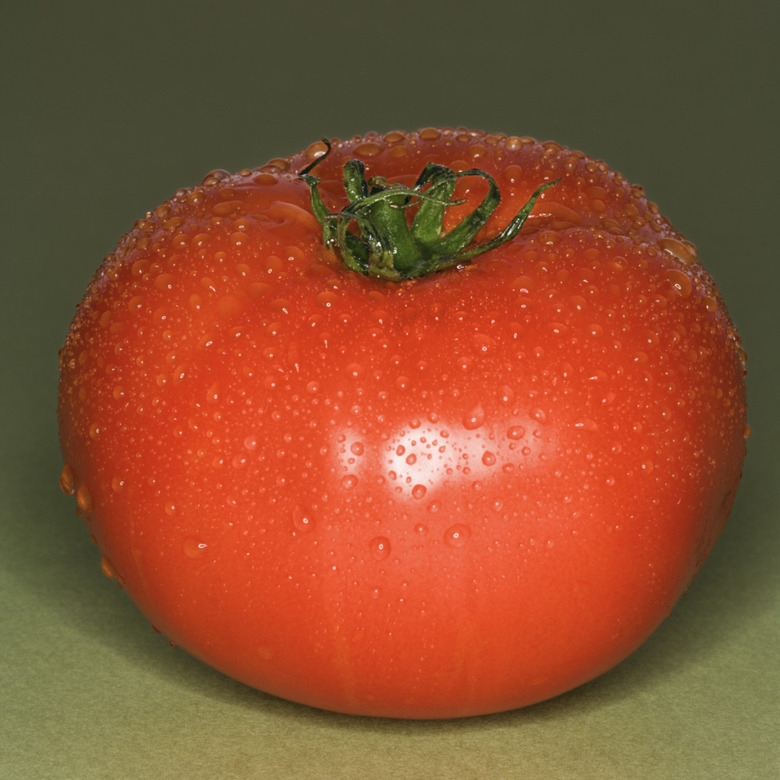How Many Gallons Of Water Should A Full-Sized Tomato Plant Need Each Week?
Tomatoes (Lycopersicon esculentum) are a tender, warm-weather vegetable and a favorite of gardeners. Though a perennial, the tomato is usually cultivated as an annual. Preferring a rich, loamy soil and full sun, tomatoes are a thirsty vegetable and benefit from regular irrigation or rainfall.
Water Requirements
Step 1
With a deep root system, tomato plants prefer deep irrigation that occurs semi-regularly rather than light, daily irrigation. As a general rule of thumb, tomato plants require 1 to 2 inches of water each week, but a more accurate measurement is 1 inch of water, or 1 gallon of water, every 5 days. If there is infrequent or irregular irrigation, the tomato plant can become stressed and develop growth problems, including blossom end rot and cracked or split fruit.
Transplanting
Step 1
The first few days after transplanting, water your tomatoes deeply and more frequently to help the plants establish themselves well. This will help prevent your plant from becoming overly stressed and weakened, making it more susceptible to pests and diseases. As the plant establishes itself well, you can begin adopting a more infrequent irrigation schedule.
- Tomatoes (Lycopersicon esculentum) are a tender, warm-weather vegetable and a favorite of gardeners.
- With a deep root system, tomato plants prefer deep irrigation that occurs semi-regularly rather than light, daily irrigation.
Methods
Step 1
When watering your tomatoes, water at the base of the plant, rather than overhead. This minimizes the amount of standing water that stays on the foliage and the fruit, reducing the likelihood that fungal and bacterial disease will take root. Water your plants early in the morning at the base of the plant to reduce the amount of shock. If you water your tomatoes in the heat of the afternoon, the sudden change in temperature in the soil can lead to a stressed plant and a reduced harvest.
Mulch
Step 1
Mulch your tomato plants immediately after transplanting or when they have established themselves. Add a 3-inch layer of mulch at the base of the plant, avoiding touching the stem at the bottom. Mulch helps conserve soil moisture as well as regulate soil temperature so there is less likelihood the tomato plant will become stressed during drought or temperature fluctuations. A natural mulch such as leaf mulch will also decompose over time, adding nutrients to the soil.
- When watering your tomatoes, water at the base of the plant, rather than overhead.
- Mulch helps conserve soil moisture as well as regulate soil temperature so there is less likelihood the tomato plant will become stressed during drought or temperature fluctuations.
